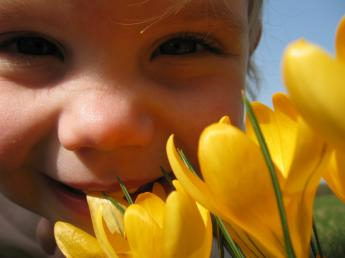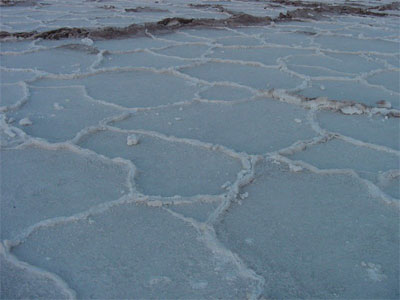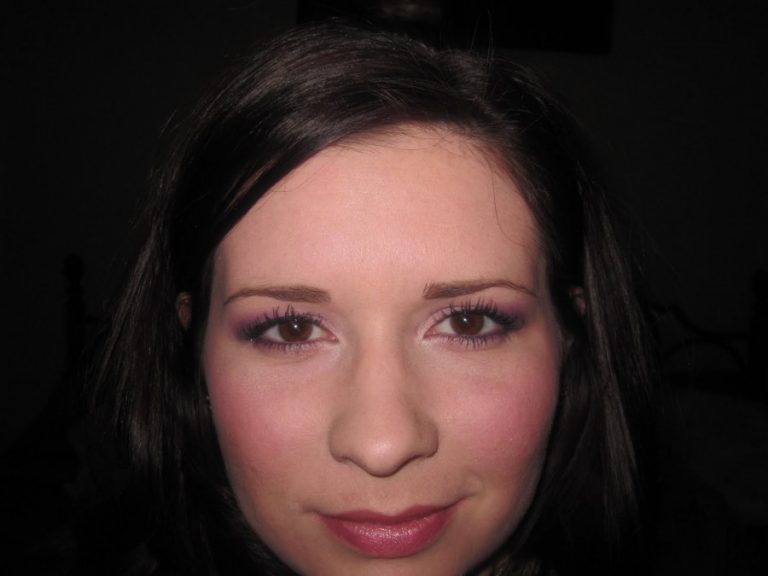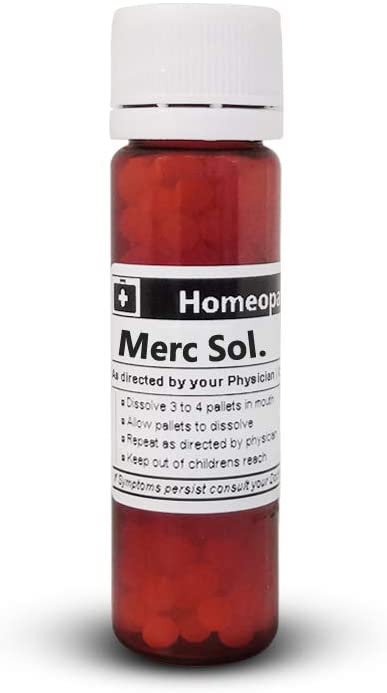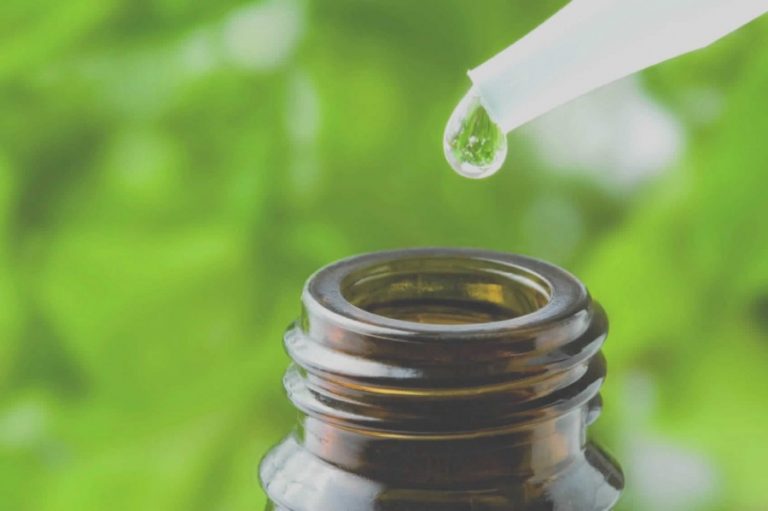How to take the case and find the similimum – Eugene Nash M.D.
Many failures to select the right remedy for the sick are due to a failure to select the line of properly taking the case. We might as well under take to recognize a person by looking at his hand, or hand and foot, as to cover the case with the appropriate remedy from a few symptoms when there are many to come into the complete picture.
Oftentimes in a case half reported the very symptoms that are most important, so far as the selection of the remedy is concerned, are left out. This is especially true with the homeopathic system of prescribing. It is so natural for a patient to think that if he tells us that he has a cold, or indigestion, or rheumatism, that we ought to be able to prescribe for him forthwith, and strange to say, I have met more than one physician who seemed to have no better conception of homeopathy than this; and evidenced it by asking such questions as , “Doctor, what is your best remedy for diphtheria”, or rheumatism, etc.
There is of course, only one proper answer to such a question, from a homeopathic standpoint, viz, the indicated one.
The name of a disease may be helpful so far as calling to mind a class of remedies that have been found curative, but the symptomatology of the case in its entirety, and especially in those symptoms which are peculiar and characteristic, in correspondence with the remedy which in its pathogenesis has the same, must decide which ONE of the class is the true similimum.
But some one will object, I cannot wait to hunt down a case like that. Life is too short. I answer “Then you will wait for your cure, and life may be too short for that”. Of course recovery may come (no thanks to us), but never cure.
Then if Similia Similibus Curanter is true, the taking of case in the entire range of its symptoms is of first importance.
Where shall be begin?
LOCATION
In the majority of cases, the patient will locate the trouble without your asking questions, as “Doctor, my head is troubling me.” It may be headache, vertigo or an eruption. It may be in the chest, as pneumonia, pleurisy, pericarditis or organic heart trouble; or it may be in the abdomen in the region of the stomach, liver, kidneys, or pelvic organs. In all such cases the patient will locate the pain, or other suffering, and we must if possible interpret in the light of our knowledge as physicians, and at the same time bear in mind the remedies known to produce similar pain and suffering, in the same localities. Or, if not borne in mind, all that remains for us to do is to hunt them up in our repertories, or Materia Medica. For instance: Is there a pain in the upper right chest, Arsenicum acts characteristically there.
Right middle chest? Belladonna, Sanguinaria, Calcarea ostearum, etc.
Lower right? Chelidonium, Kali carbonicum, Mercurius
Left upper? Myrtus, Pix liquida, Theridion, Sulphur, Tuberculinum, etc
Left lower? Natrum sulphuricum, Phosphorous
Here I have named a few remedies that have a particular affinity for these locations in the chest, and in all these cases, this is generally in connection with lung troubles, and further examination will disclose the remedy most appropriate.
If such pains in the chest region should occur outside the lung itself, it might indicate Bryonia, Squilla or Sulphur in pleuritic troubles, or Arnica, Cimicifuga, Ranunculus or Rhus tox in rheumatic pleurodynia, or intercostal rheumatism.
It is not the province of this writing to draw the distinction between remedies, which the case in all its local manifestations, concomitants and modalities would suggest, but to impress upon our minds the importance that must attach to locality .
But one will truly object that sometimes the sickness or suffering does not localise. The patient in answer to the question as to where the pain or suffering is located, answers : ” All over , I feel badly all over; weak, aching, sore and trembling.”
This might be a case of incipient typhoid and Gelsemium or Baptisia would be in place, or the prostration might be a result of some drain on the system, as haemorrhage, leucorrhoea or loss of semen, and call for such remedies as China , Phos ac, Nat mur, Kali carb or Stannum.
Still although the trouble does not manifest itself in any particular part or organ (and some would relegate it to the realm of Sensation ), I think it might come under the head of location, like absence of pain would come under the head of sensation. It is located all over and in no particular part. It is under the head of location in a negative sense and significant. Now, in either case we have made a good beginning in taking the case, and the next step is as to
SENSATION
Trouble in what location? What about it? Is it pain, coldness; heat or burning; sweating; cramping; emptiness; fullness; or any other abnormal sensation? Describe it as nearly as possible.
Is it a burning pain or sensation? Apis mellifica, Belladonna, Arsenicum, Cantharis, Capsicum, Phosphorous and Sulphur all have that very markedly
Is it sticking pain? Then Bryonia, Kali carbonicum and Squilla come to mind.
Sense of fullness? Aesculus , China , Lycopodium and Carbo veg ; especially if in the abdomen, pelvis or anus.
Is it a sense of emptiness or goneness? Cocculus, Ignatia, Phosphorous, Sepia or Sulphur .
Constriction? Cactus grandiflora, Natrum muriaticum , etc.
Cramping? Cuprum, Colocynth, Magnesia Phosphorica .
Faintness? Ignatia, Hepar sulphuris, Nux moschata, Nux vomica, Sulphur .
Numbness? Aconite, Lycopodium, Platina, Rhus tox, Secale , are prominent.
And we might go on to mention many more sensations that have been observed in so-called disease and pathogenesis of drugs. These sensations are for purpose of prescribing , invaluable to the homeopathic physician, and occur in almost every abnormal state to which flesh is heir.
Not of less importance in the taking of the case than Location and Sensation is that which is termed


MODALITY
What aggravates or ameliorates?
First , as to time. Are the symptoms worse in the morning? Remember Nux vomica, Nat mur, Podophyllum , etc
Forenoon? The same.
Afternoon? Belladonna, Lycopodium, Apis mellifica.
Evening? Aconite, Pulsatilla , etc
Night? Arsenicum , Mercury, Rhus tox.
After Midnight? Arsenicum (1 to 3 A .M.), Kali carbonicum ( 3 A .M.), Rhus tox .
As to circumstances:
Aggravation on movement calls for such remedies as Bryonia, Nux vomica and Arsenicum
Amelioration of movement : Rhus tox, Pulsatilla, Ferrum, Lycopodium
Aggravation on descending : Arsenicum and Calc ost
Aggravation in wet weather : Dulcamara, Rhus tox, Natrum sulphuricum, Nux moschata, Rhododendron
Aggravation in dry weather : Hepar Sulphuris, Causticum, Nux vomica
Ameliorated by hot applications : Arsenicum, Magnesium phosphoricum
Ameliorated by cold applications : Apis mel, Pulsatilla
Aggravation in cold air : Hepar sulphuris, Arsenicum, Nux vomica, Silicea
Aggravation in warm air or weather : Antimonium crudum, Bryonia, Pulsatilla
Aggravation after eating : Nux vomica, Bryonia, Pulsatilla, Arsenicum
Amelioration after eating : Iodine, Chelidonium, Anacardium, Petroleum
Aggravated after fat food : Pulsatilla, Carbo vegetabilis
Fat food agrees and is desired : Nux vomica and Nitric acid
All these and many more may be classified under the head of what are by some called Generals . Another class is termed Particulars , because referring to regions or particular organs such as:
Diarrhoea aggravation in the morning : Sulphur , Bryonia, Podophyllum, Natrum sulphuricum and Rumex
At night : Arsenicum , China , Mercury, Psorinum.
Chest affections aggravation worse when lying : Psorinum, Laurocerasus.
Amelioration sitting : Arsenicum, Kali carb
Anal trouble, worse after stool : Aesculus, Aloe, Muriatic acid, Nitric acid, Sulphur .
Many more are there which are both general and particular just as important to show the equal importance of Modalities with Location and Sensation. To try and produce them here would be to incorporate a large part of Boenninghausen’s Pocket Book , and all the repertories extant.
We cannot use space to mention any of the many possible concomitants (another of Boenninghausen’s divisions), which are no less important than the preceding in the necessary “make-up” of a case, but will come to the apparent.
CAUSES
of diseased conditions. Boenninghausen includes these under the head of modalities , but they ought in my opinion to be seperated, as they often equal in importance the other three.
For instance was it fright? Aconite, Gelsemium, Ignatia, Opium, Lycopodium and Veratrum album occur to us.
Exposure to dampness or cold air : Dulcamara, Rhus tox, Natrum sulphuricum, Nux moschata
or exposure to dry cold air : Aconite, Bryonia, Hepar Sulph, Causticum.
Cold bathing? Antinomium crudum, Rhus tox, Sulphur
Suppression of an eruption? Sulphur, Psorinum or other anti-psorics.
A badly treated or suppressed gonorrhoea? Thuja, Medorrhinum
We might under the head of causes mention many more than we have, but the skillful homeopathist will not under-rate any of them in his examination of the sick. And now, though coming late, we must not fail to call attention to another important thing for consideration, namely
CONSTITUTION AND TEMPERAMENT
Some would have noticed this first, and it is certain that the “personal” of the patient cannot be ignored and their diseases often present symptoms that find their similar in a certain class of drugs. Dr. TL Brown, one of the best prescribers I ever knew, used to say, that is he met a pure Pulsatilla temperament he would always find the symptoms and conditions to correspond. That is putting it strong, and it might be found that Nux vomica would be indicated in a Pulsatilla subject. These are the exceptions that prove the rule.
Sulphur will rarely be called for in a Calcarea ostearum temperament, an vice versa.
Iodine, Lycopodium and Nitric acid are three of the remedies that often find their indications in brunettes of spare habit, and so we find them in the remedies oftenest adopted to the sanguine, nervous and bilious subjects. Not only is this true in regard to the choice of remedies, but the rule holds good in the proving of drugs. The subject most responsive to the curative action of certain remedies will also be the most susceptible to their pathogenetic effects. Some undoubtedly place too much stress upon this feature in taking the case, and thus run into routinism, while others underestimate it. There is a point where extremes meet and form the completed circle.
Constitution and temperament must certainly come into the totality of the case.
This method of taking the case is the one adopted by Boenninghausen, and the outcome was his celebrated Therapeutic Pocket Book . There is another method in use, and employed by some of our best prescribers, which is also a good one, which I will illustrate by a case so taken. The symptoms are grouped under two heads Generals and Particulars :
|
Sr |
Generals |
Generals (Same as found in the repertory) |
|
1 |
Worse from physical exertion |
Aggravation by physical exertion |
|
2 |
Tendency to take cold |
Tendency to take cold |
|
3 |
Efforts to think made the mind seem blank |
Aggravation by mental exertion |
|
4 |
Easily hurt by what people say or do |
Sensitive |
|
5 |
Mind dwells on breaking up of home |
Dwells on past disagreeable events |
|
6 |
Which is a lasting grief |
Ailments from grief |
|
7 |
She could not think or remember well |
Weakness of memory |
|
8 |
Attacks of low spirits lasting days |
Sadness and mental depression |
|
9 |
Has lost all ambitions |
Loss of ambition |
|
10 |
Would hardly speak, even when addressed |
Aversion to talking |
|
11 |
Fear of death, if left alone |
Fear of solitude |
|
12 |
Trembling when tired or excited. |
Trembling externally |
|
13 |
Felt as if going insane |
Fear of insanity |
|
14 |
Worse after eating sweets |
Aggravated by sweets |
|
15 |
Always weak since scarlet fever |
After scarlet fever |
|
16 |
Felt very tired |
Weariness |
|
17 |
Nervous prostration |
Nervous weakness |
|
18 |
Lying down relieves |
Amelioration by lying down |
|
19 |
Feels tired and bad in the morning |
Aggravation in the morning |
|
20 |
Great menstrual difficulty |
Painful menstruation |
|
21 |
Menses profuse |
Menses profuse |
|
22 |
Menses long lasting |
Menses protracted |
|
23 |
Menses too early |
Menses too early |
|
Sr |
Particulars |
Particulars (Same as found in the repertory) |
|
1 |
A bursting pain the front part of the head |
Bursting pain in the forehead |
|
2 |
Redness of the nose |
Redness of the nose |
|
3 |
Discharge from nose, bloody mucus |
Discharge from the nose, bloody |
|
4 |
Nose is full of scabs |
Nose scabs |
|
5 |
There are brown spots on the face |
Brown spots on the face |
|
6 |
An unclean taste in the mouth in the morning |
Bad taste in the mouth |
|
7 |
Intolerance of anything in her throat |
Throat sensitive to slightest touch |
|
8 |
Stomach gets sour |
Sour eructations |
|
9 |
Has heart burn |
Heartburn |
|
10 |
Sensation of stone in the stomach |
Sensation of stone in stomach |
|
11 |
Wind in stomach |
Flatulence in stomach |
|
12 |
Stool is partly expelled and then recedes |
Stool slips back |
|
13 |
Smarting pain in rectum |
Smarting pain in rectum |
|
14 |
When not constipated stool is expelled like shot |
Stool shooting out |
|
15 |
When desire for micturition is felt it has to be satisfied immediately, or urine cannot be retained |
Must hasten to urinate or urine cannot be retained |
|
16 |
Colds of a croupy form |
Croupy |
|
17 |
Hairs turned gray |
Hair becomes gray |
|
18 |
Sensation of weight on her chest |
Heaviness in chest |
|
19 |
Seems as if would strangle when coughing |
Choking when cough |
|
20 |
When hurt very excited and heart palpitates |
Emotional excitement and palpitation |
|
21 |
Curvature of the spine |
Curvature of the spine |
|
22 |
Spine externally sensitive to touch |
Backs, pains, spine |
|
23 |
Sudden desire for food which must be gratified |
Ravenous appetite |
|
24 |
Palpitation caused by lying on left side |
Palpitation when lying on left side |
|
25 |
Upper part of spine is stiff |
Stiffness of cervical region |
|
26 |
Rubbing ameliorates |
Numbness ameliorated by rubbing |
|
27 |
Burning in the back |
Heat up the back |
This was the case, and was of one years standing. Before “chasing it down” in the repertories I predicted that Phosphorous would be the remedy. It was worked out by another physician, and when she got through the Generals she came to me with a smile and showed the result: Natrum muriaticum , 44 ; Pulsatilla , 39 ; Phosphorus , 38 ; Nux vomica , 38 ; Calcarea ostearum , 38 ; Sulphur , 37 ; Lachesis 32 ; Mercurius , 32 .
“How about Phosphorus ?” said she. I answered, work out the rest of it. The particulars stood : Phosphorus , 41; Nux vomica , 39; Sulphur , 37; Lachesis , 33; Pulsatilla , 31; Lycopodium , 27; Arsenicum , 27; Mercurius , 28; Calcarea ostearum , 25; Natrum muriaticum , 24.
Summary : Phosphorus , 79; Nux vomica , 77; Sulphur , 74; Pulsatilla , 70; Natrum muriaticum , 68; Lachesis , 65; Calcarea ost , 63; Mercurius , 60.
(After this work is done, I find that about the first seven remedies may be taken for further comparision. Not only the totality of symptoms, but those that are characteristic and peculiar. (See Organon paragraph 151), must be recognised. For instance if with the two remedies, Nux and Phos in the case, Phos had five characteristics, while Nux had ten, the later remedy would deserve preference and further examination of the pathogenesis, verified and unverified, would place it there. This is where the judgement and skill of the man with long experience and practice in the art of prescribing becomes invaluable)
Now I do not claim that I can with certainty always predict the remedy that will come out ahead. I remember another Phos case in which I predicted that Calc ost would be the remedy, and the result of the “hunt” placed it second.
To the skillful and experienced physician, the case so taken may sometimes stand out prominently in its characteristic and peculiar symptoms as to carry on its very face the sure indications for the remedy. But other cases will come to us so complicated that the best of us must make long and arduous study of it. Especially this is true in chronic diseases .
None, but the true homeopathic physician realises the importance of throroughly taking and working out such cases.
Rarely will a case come out so clearly that the cure can be performed with one remedy, but a succession of remedies will be necessary, and here is where the so-called complementary relations of remedies come in for recognition and skillful application.
P. S.: On reviewing the foregoing, I feel constrained to add, lest we be charged with not being up-to date, especially in pathology, that for purposes of diagnosis, the tests for evidence of disease, bacteriological, chemical, etc should not be neglected. The urine, sputum, blood, excretions, etc, furnish important signs.
But for the purpose of prescribing , we do well to remember the teachings of Raue, who stood high both as a pathologist and prescriber. He said : “The symptoms which go to make up the choice of the remedy often stand outside those that go to make up the pathology of the case.” Every prescriber accorsing to Similia Similibus Curanter understands this.
Source: http://www.onlinehomeo.com
Copyright Deepak M. R. 2000
Copyright Sylvain Cazalet 2000
